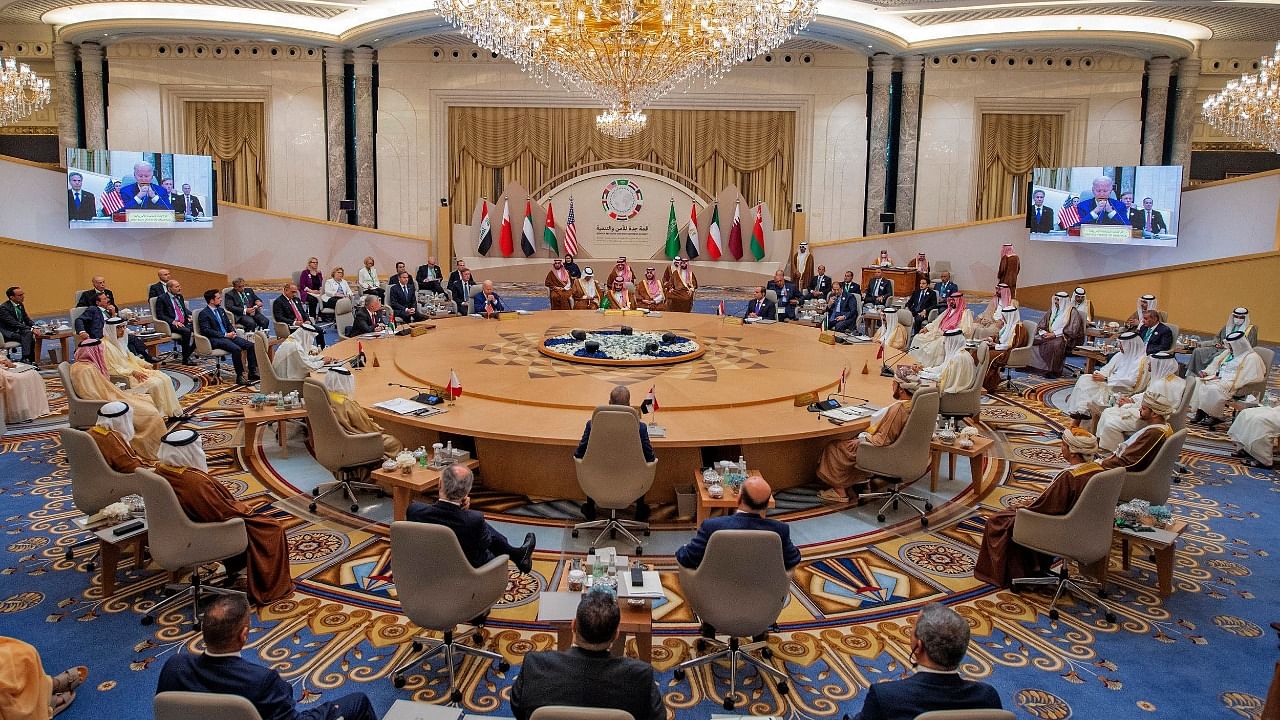
The geopolitics of the Red Sea is changing with increasing Great Power play. The US Navy announced its decision to form a joint task force to oversee the waters of the Red Sea in April this year. The naval taskforce will patrol through the Red Sea, the Bab-el-Mandeb strait, and the Gulf of Aden, a strategically significant global maritime passage. The US move seems to have been triggered by Iran-backed networks that have used the international shipping lines in this region to target assets belonging to the US and its partners.
Multiple attacks and seizure of vessels with the use of fast boats by rebels belonging to the Houthi Movement (Ansar Allah) have affected maritime commerce in this region. Moreover, the high seas are also used to supply arms to the Houthis. Earlier, the Red Sea was impacted by the war in Yemen.
In June, US President Joe Biden committed US troops to deal with the Yemen situation. In his letter to the US Congress, he mentioned that the troops were deployed to destroy the breeding grounds of extremist groups like Al-Qaeda in the Arabic Peninsula (AQAP) and the Islamic State.
The proposed security restructuring and the deployment of the naval force will bolster the Fifth Fleet of the US Navy that oversees the region between the Strait of Hormuz and the Red Sea. The deployment could potentially thwart incoming threats from Iran’s asymmetric regional forces. It can sever the supply conduit between Iran and the Houthis through the seas.
The rebels have increasingly been targeting highly sensitive infrastructure in Saudi Arabia and the UAE through airborne attacks. President Biden has sought to mend relations with Saudi Arabia and the UAE in order to convince them to pump more oil to stabilise the global energy situation. Efforts to mend relations between Saudi Arabia and Israel by adding one more party to the Abraham Accords is also in the same direction.
The US has been stepping up its efforts by proposing a plan to integrate the air defence of Israel and the Gulf Arab states such as Saudi Arabia, UAE, Kuwait, Qatar, and Bahrain to jointly counter the threat from Iran and its proxies in the region. During Biden’s recent visit to West Asia, the US pushed the idea of integrated air defence with Saudi Arabia.
America’s relations with Saudi Arabia and the UAE are under duress, clearly indicated by recent policy decisions by Riyadh and Abu Dhabi. The Gulf Arab States refused to condemn Russia for its invasion of Ukraine. Saudi Arabia and the UAE had rejected demands from the US to increase their oil production to compensate for Russian oil.
Another option for President Biden is to make compromises that allow Iran and Venezuela to pump oil into the market, an unlikely path though. Besides their contradicting diplomatic stands vis-à-vis the Russia-Ukraine conflict, Riyadh and Abu Dhabi have criticised Biden’s approach to Iran and the war in Yemen. The Gulf States have also not supported Biden’s efforts to get Washington back in the Iran nuclear deal (JCPOA).
At the strategic level, an increased US military presence in the region, seen as a confidence-building measure, might promote enhanced engagement between Washington and its strategic partners in the Gulf.
Coupled with other major security and diplomatic efforts, the US is expected to gain Arab States’ cooperation in the Russia-Ukraine crisis and further US partnership with these States. From a regional perspective, these developments could abet the process of bringing together Israel and the Gulf States, and bolster Saudi Arabia to keep the Iranian threat in check without the US having to get involved directly, allowing the US to focus on the Indo-Pacific. The Russia-Ukraine war has stretched even the US’ ability and capacity to operate favourably on the two fronts -- Europe and the Indo-Pacific -- without the help of regional partners.
As the war in Europe drags on, the US is clearly feeling the pressing need to leave no strategic vacuum in the Indo-Pacific for China to fill, while it remains engaged with Russian moves.
As such, the improved security measures taken by the US in the vital chokepoints in the Red Sea should act as a deterrent and ensure predictability and safe passageway for trade. The Red Sea connects the Mediterranean with the Indo-Pacific, witnessing more than 10% of global trade through its waters.
A crisis in the Red Sea from the Suez Canal or Bab-el-Mandeb could reverberate in the Indo-Pacific. The world got a glimpse of this threat when the Suez Canal was blocked by a container ship for six days in July 2021. The security of this waterway is integral to the security of the geographies extending beyond its maritime borders.
(Vivek Mishra is Fellow, Strategic Studies, ORF, New Delhi; Poornima Balasubramanian is a doctoral candidate at Manipal University)